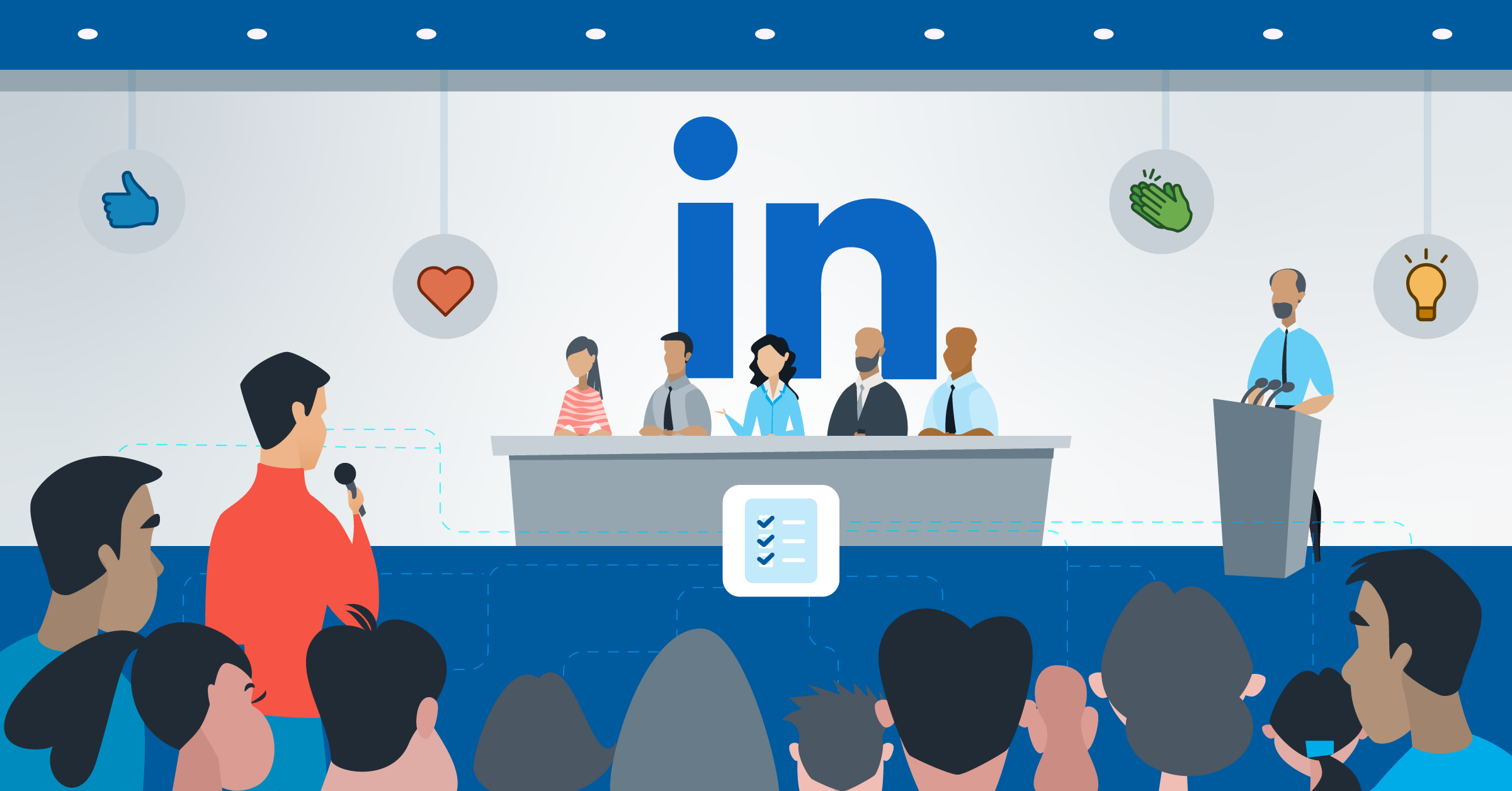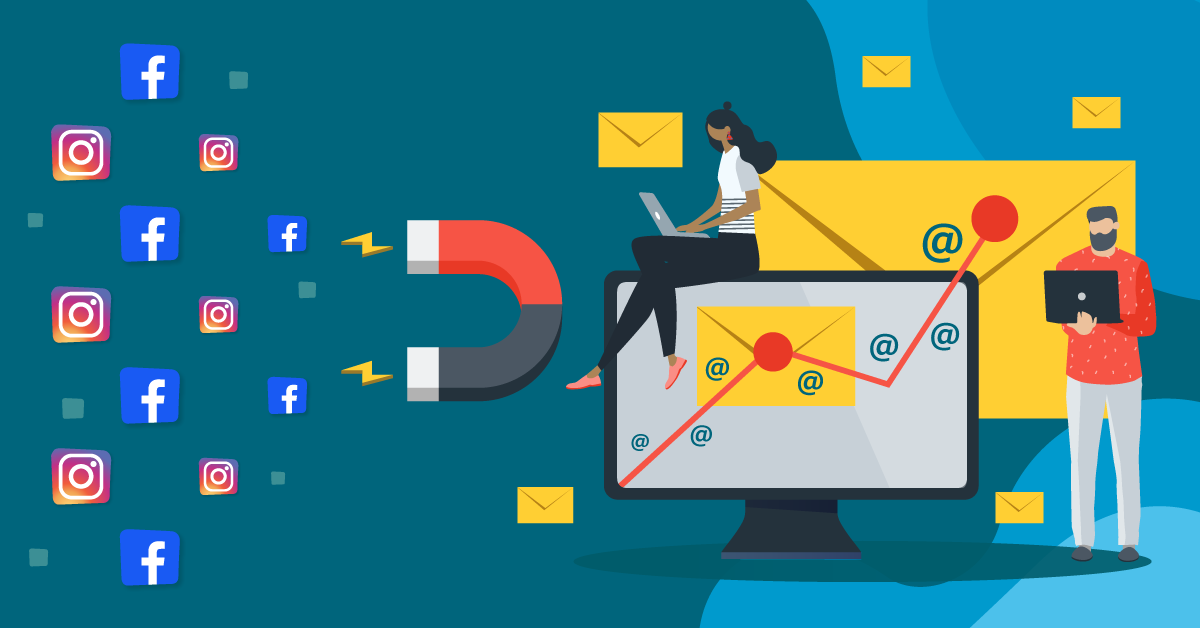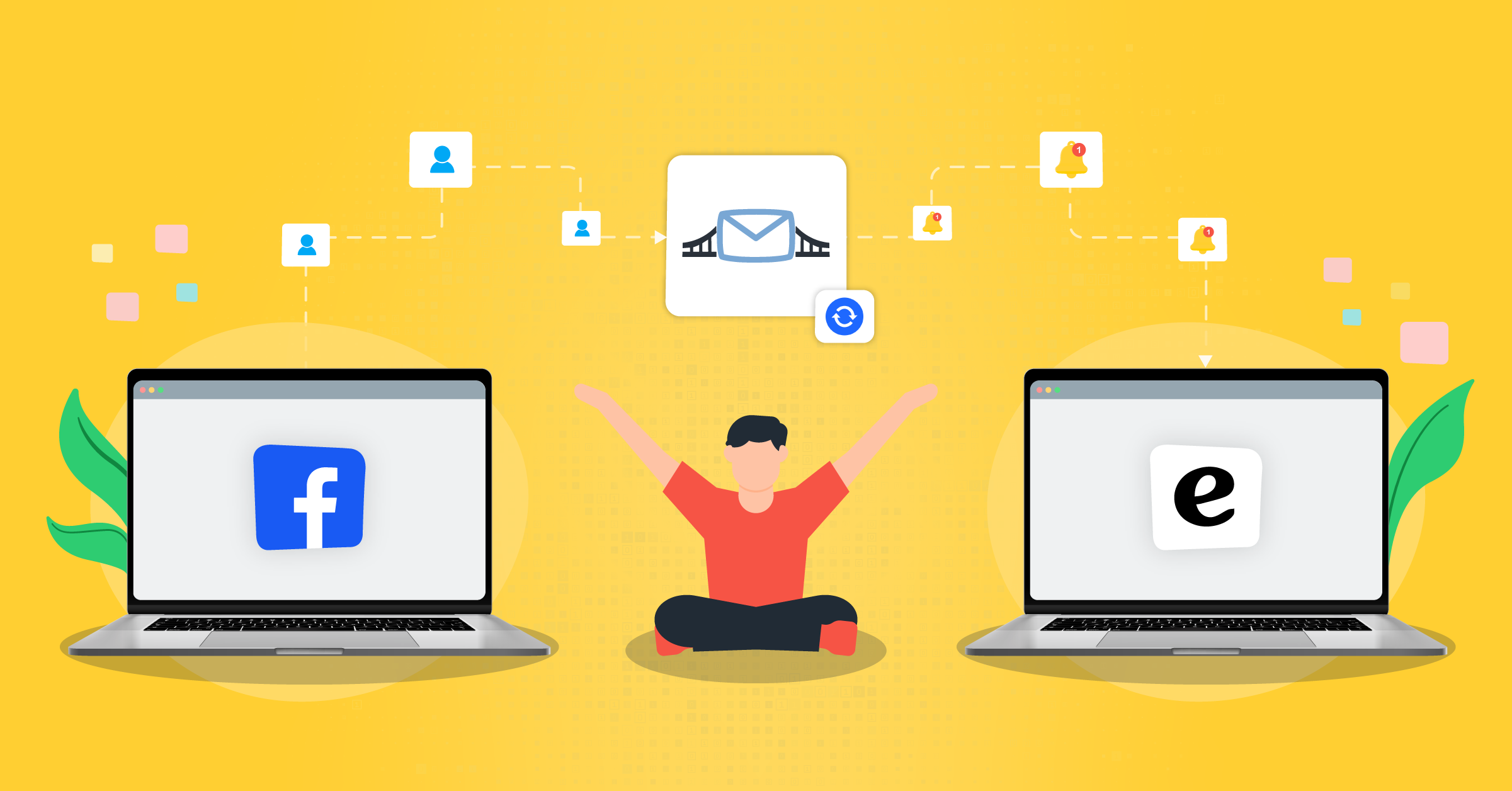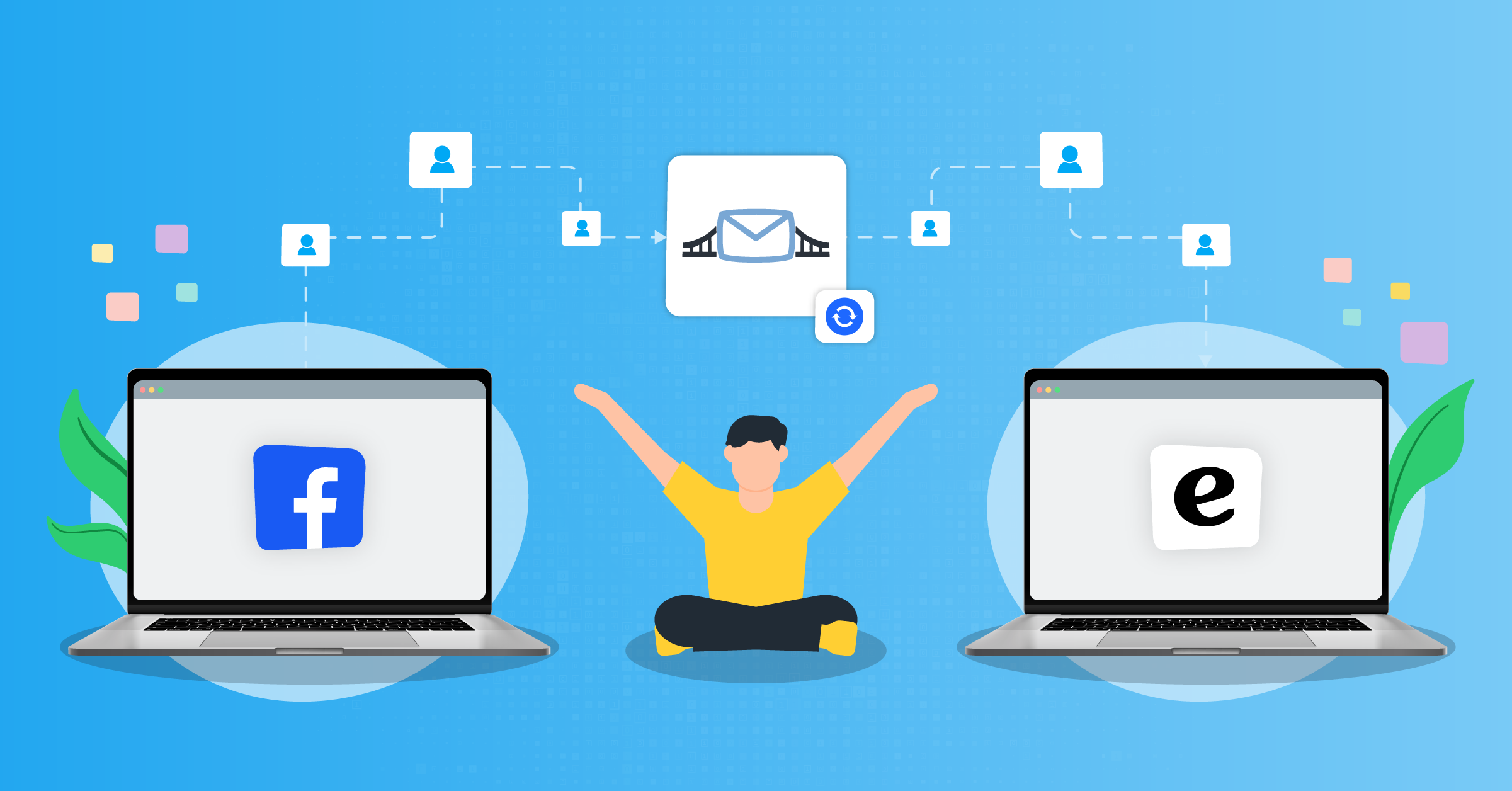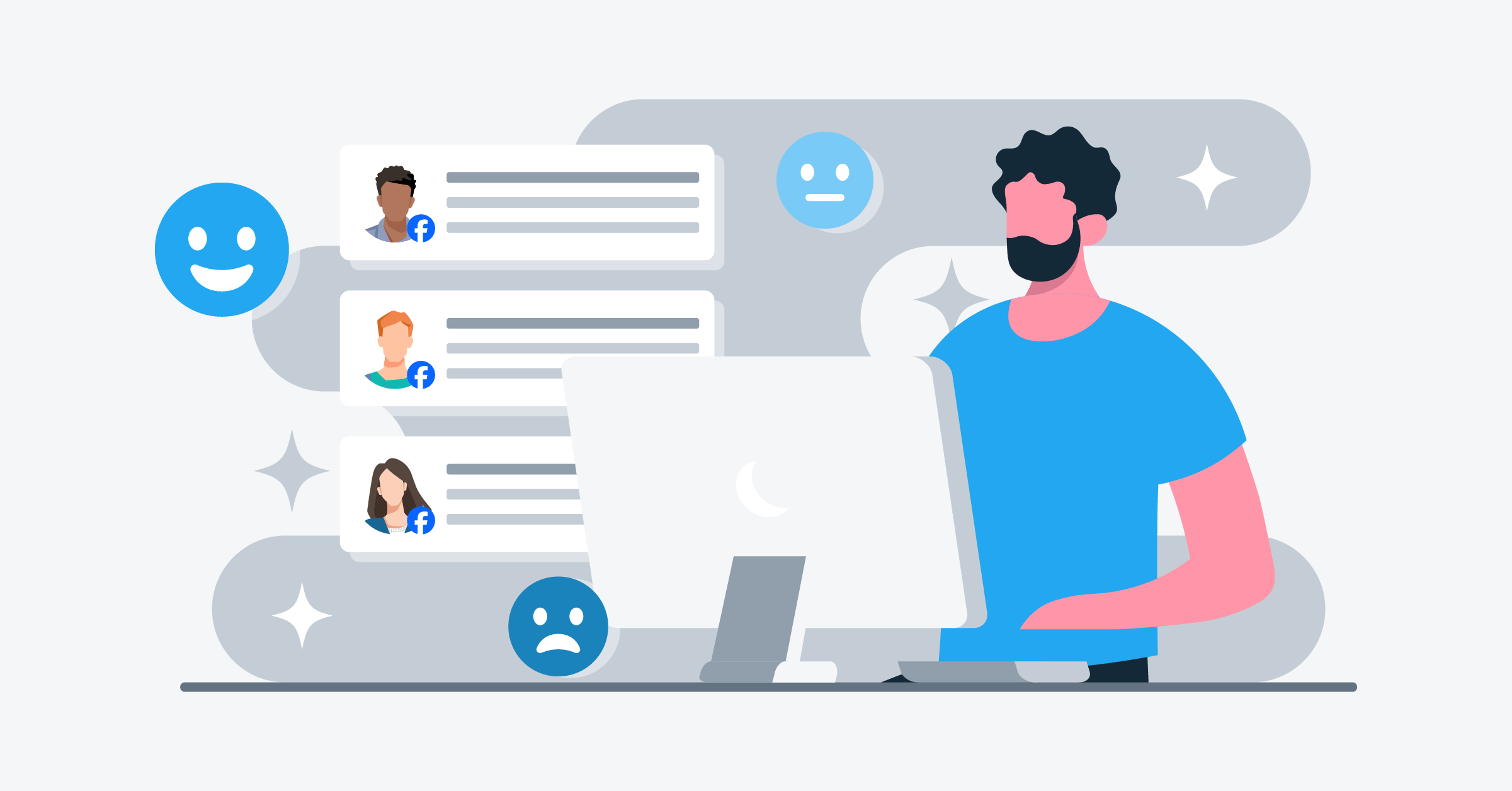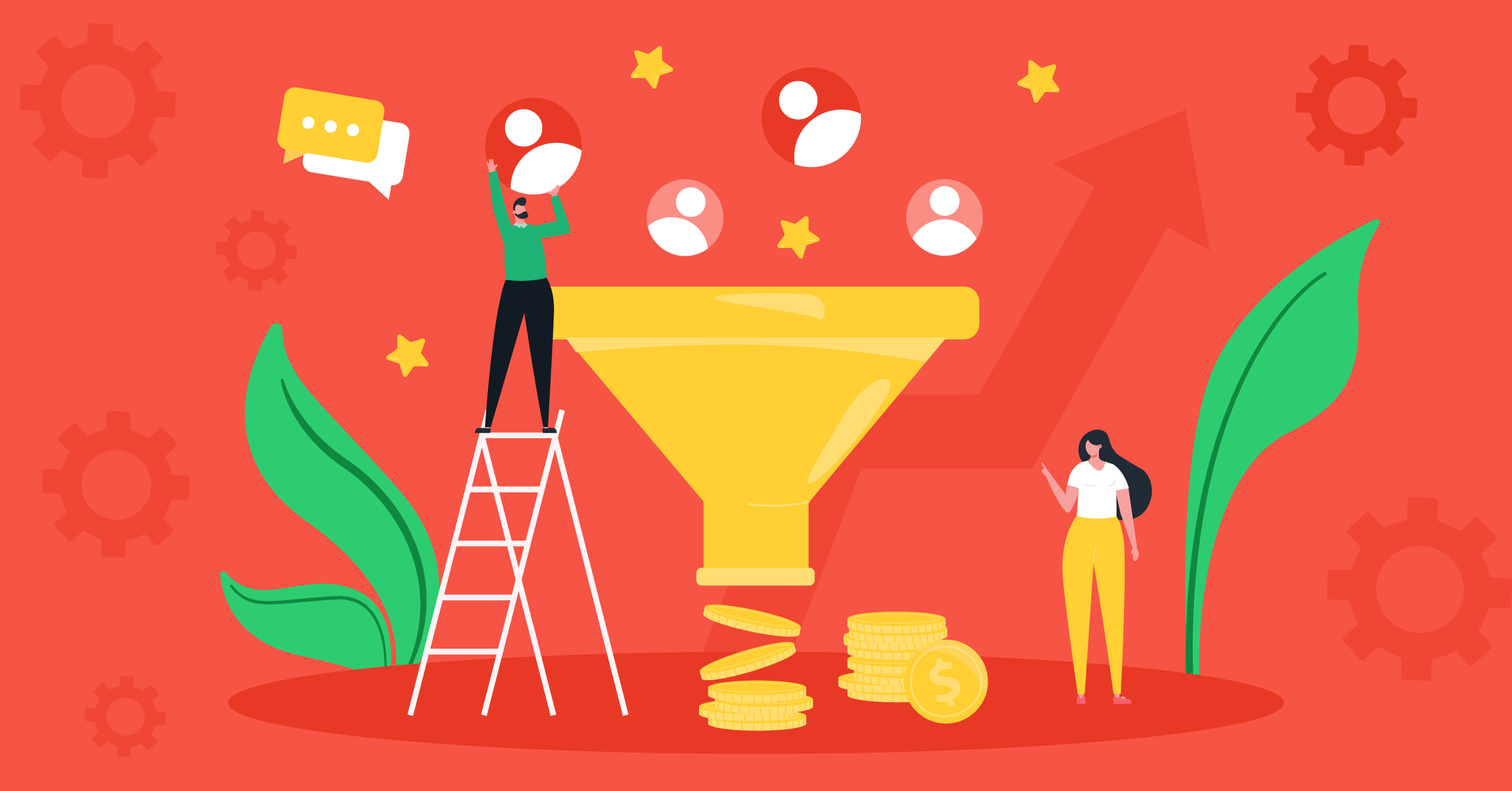
The appeal of platforms like Facebook Ads is easy to see. You can set up campaigns in a few clicks, write some copy, and hopefully get clicks and sales for a relatively low cost.
That’s the dream… and while it theoretically can work like that, the reality is often much more complex.
That’s where paid advertising funnels come into the equation; they create intricate and multi-touch journeys that keep customers engaged until they’re ready to purchase.
In this post, we’re going to go over everything you need to know about paid advertising funnels, including Facebook Ads funnels and beyond. Moreover, we’ll introduce some of our integrations for ads and conversions that can help you to streamline your funnels, such as:
What is a paid advertising funnel?
Before we look at ad funnels, it’s important to talk about the digital sales funnel.
The digital sales funnel details different steps that users take throughout their buying process. The basic model of a buyer’s journey might include the following stages:
- Discovery, where they learn about a brand for the first time
- Research and consideration, where they’re considering a brand and potentially actively researching a buying decision
- Purchase, where they officially become customers
- Loyalty and retention, where brands seek to re-engage existing customers for ongoing purchases
A paid advertising funnel is going to be set up to create multiple touch points at each stage of the digital sales funnel. No matter where users are in their buyer’s journey, they’ll be able to see an ad that’s relevant to them at that point in time.
This will help push all users to the next stage of their purchasing decision, and towards more purchases.
What this looks like: A marketing funnel example
Wondering what an online advertising funnel really looks like?
Here’s a basic marketing funnel example that you might see.
I, as a customer, need a new chair for my home office. I start with a Google search, and immediately see ads from Haworth Chairs. I click and view a landing page, but click away because want to research more options.
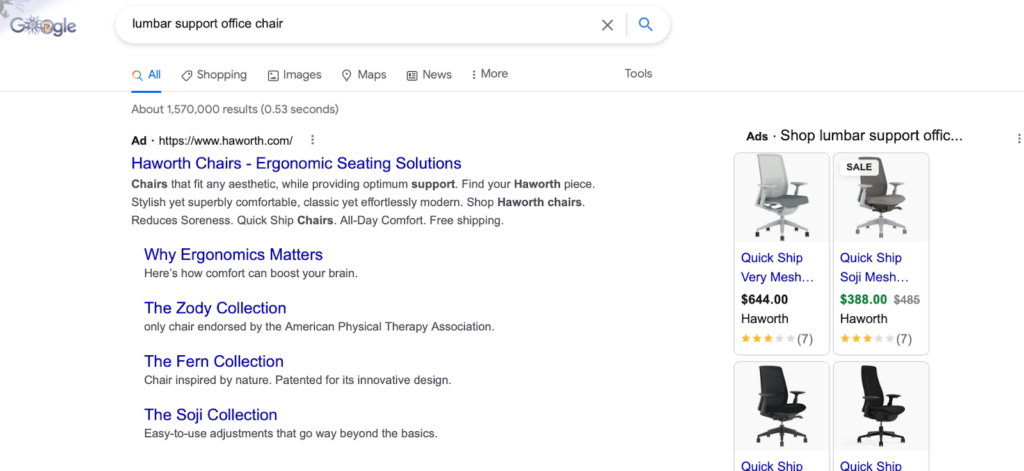
The next day, I see an ad from the same brand on Facebook. It’s a video ad promoting the ergonomic features of the chair.
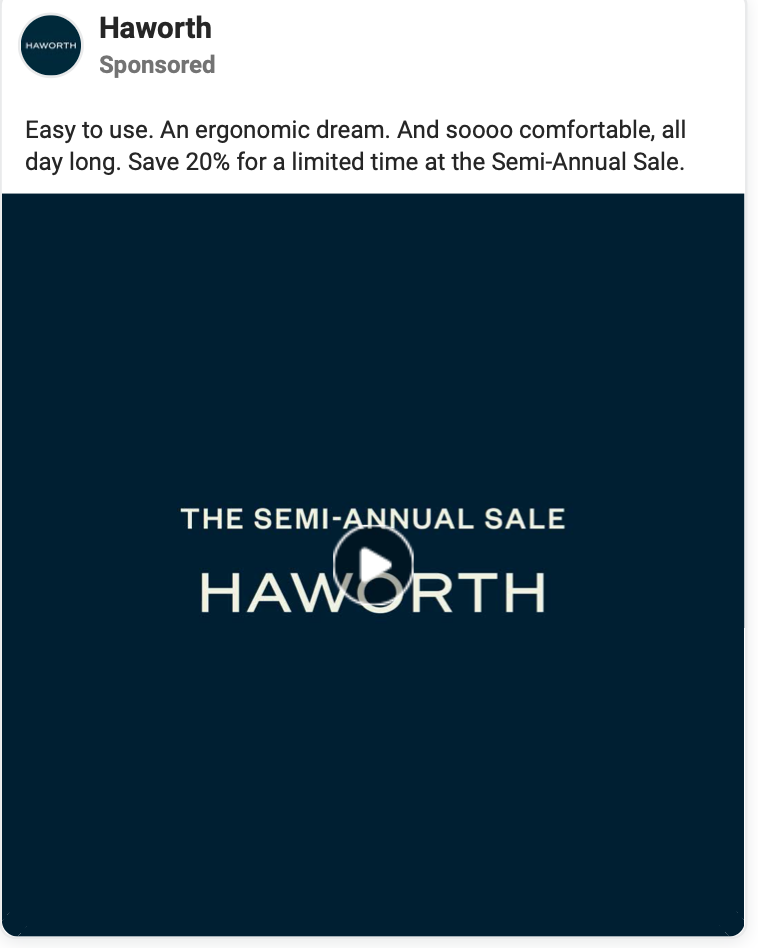
I watch the entire video, but don’t convert.
A few days later, I get another ad showing me multiple different products, focusing on the 20% discount offer. This might be what makes me finally convert, seeing the focus on the 20% off, a reminder of the fact that they’re ergonomic, and seeing a chair in my favorite color.
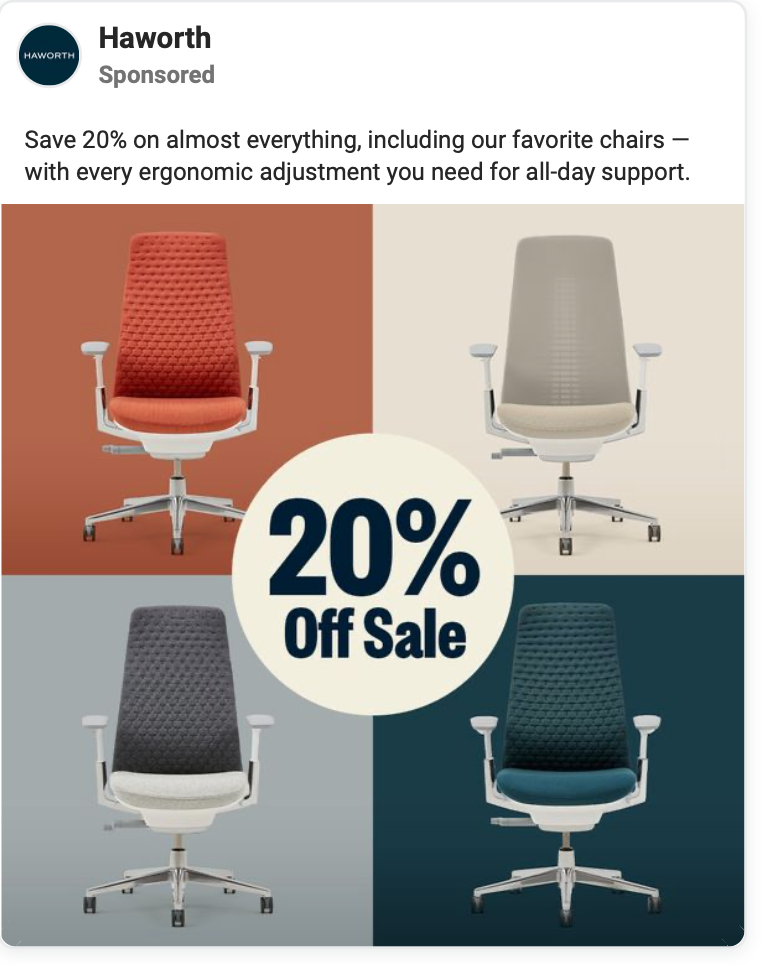
That’s how a paid advertising funnel works, and it can exist entirely on one platform (like having ads exclusively on Facebook Ads) or merge multiple platforms to create a stronger and more streamlined campaign.
Why you need online advertising funnels
In most cases, customers aren’t going to see an ad, love it, and click.
It can happen.
There have been a few times I’ve seen a really great ad on Facebook, clicked, and purchased almost right away after reading a review or two. It’s how I ended up with an enormous fiddle leaf fig in my guest room.
In most cases, however, customer journeys are long and winding. They’re complex.
Most customers need an average of seven touchpoints with a brand before they’re even able to seriously consider purchasing. They want time to think, make sure they feel good about it, research, and then come back and purchase.
You can only make sure that you’re staying connected to them during this consideration period if you’re using an advertising funnel that accounts for it. This is a crucial part of conversion funnel optimization.
Each ad in these funnels is designed to push users closer to what they need, giving them the right information at the right time and the right offers when they’re ready. It’s crucial to be in touch with users throughout their customer lifecycle, or that lifecycle will end quickly.
Without ad funnels, you’re likely to have a solid chunk of potential customers drop off and never think about you again. It’s ultimately a massive waste of ad spending that could have turned profitable.
Four tips to set up a comprehensive Facebook Ads funnel
Want to set up an effective Facebook Ads funnel— or any other type of online ads funnel? These four tips will help you get started (and get results!).
1. Utilize marketing automation to optimize your funnels
Marketing automation is going to be an important part of effective, wide-reaching ad funnels.
Think about the marketing funnel example we looked at above.
Actions on one platform— views on a landing page— directly led to an action on another platform that resulted in the potential buyer seeing an ad.
Some of this may happen automatically when you’ve got retargeting setup. Users view a page on your site or watch a video and they see a specific ad as a result.
Some of this, however, may require additional automation tools.
A user might convert on a lead ad on LinkedIn, for example, and have their information sent to your CRM. You want that data to be sent right away, and for it to then be sent immediately to a specific custom audience on Facebook so you can hit them with an offer right away. And you want to send them an email follow up, too.
LeadsBridge can help with that. We have advanced marketing automation integrations that you can set up with just a few clicks to optimize your funnels— no matter where the action is happening. Check out our funnel optimization integrations.
2. Remember to create “branches” of funnels to engage different audiences
Some users are going to respond to different types of ads. As a result, creating different types of funnels or different “branches” of funnels is the way to go.
Let’s look at two different ads from Bloomscape that showcase why this is so important.
Here’s the first. The copy is focused on rare, get-it-before-it’s-gone plants. They are high-value products with high-profit margins, and it’s going to be advertised to “serious” plant owners. Users might see this ad after they visited a “rare” plants section on the site after an initial ad took them there.
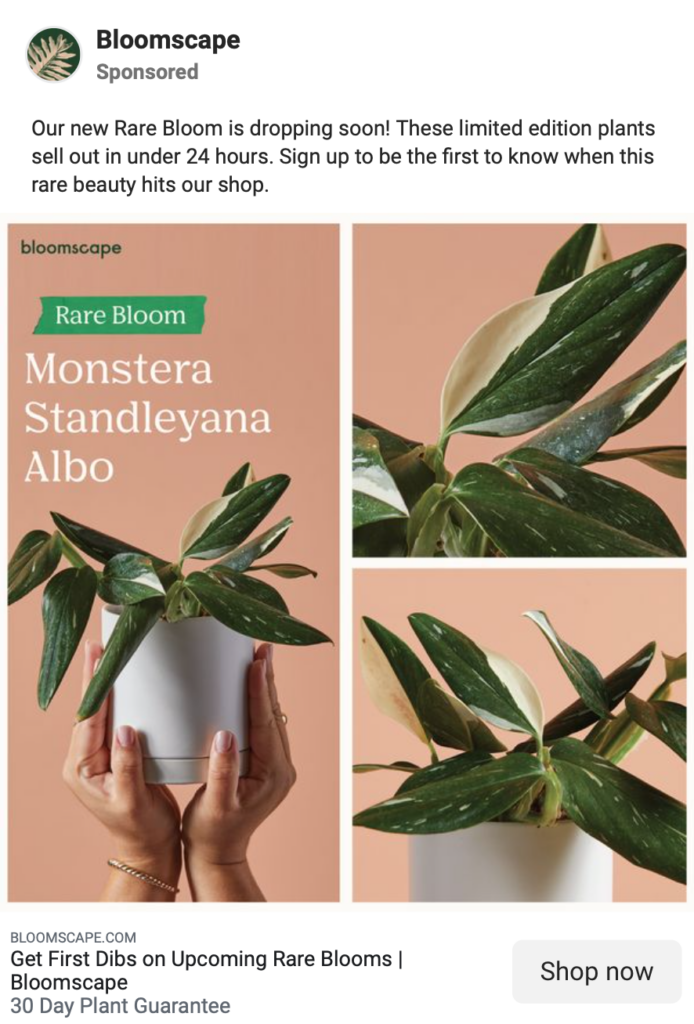
And then you’ve got the second ad. Rare plants aren’t mentioned, and instead, it focuses on newer plant owners who struggle to keep plants alive. This ad may have been shown to users who clicked on an ad promoting easy plant care, or someone who viewed the “low maintenance” section of their site.
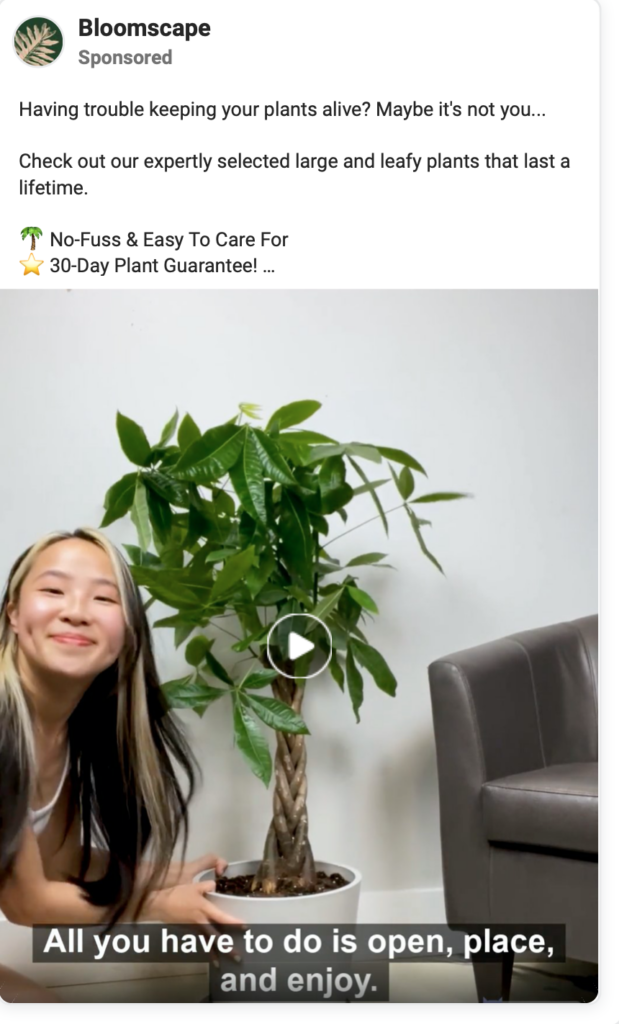
You wouldn’t want to show these two audience segments the same exact ad at every point of the funnel, because they have different needs, pain points, and motivations. Keep that in mind, having your funnel branch off as needed to keep users engaged and moving forward on the “correct” path for them.
Once again, LeadsBridge can help you to target the right audience by connecting your CRM segments with your favorite advertising platform.
3. Go beyond a Facebook Ads funnel
When most people hear “paid advertising funnel,” they immediately think it’s the same thing as a “Facebook ads funnel.”
This doesn’t have to be the case, however, and you can go beyond just Facebook Ads.
Google Ads, for example, is a phenomenal discovery platform. Having ads show up when users search for products like yours is a great way to increase the likelihood that you’re being kept in mind during the consideration process.
TikTok Ads is another high-powered platform with exceptional engagement, reach, and discovery— especially if you’re targeting a younger audience. Its potential for brand awareness campaigns is almost unreal.
And when it comes to B2B brands, never count out LinkedIn Ads.
You can create a funnel that accounts for each individual platform, which ultimately widens your reach and ensures that you’re more likely to capture your target audience wherever they are.
4. Watch your relevance scores
Many pay-per-click platforms have some sort of “quality” score that essentially tells you how relevant your individual campaigns are perceived to be by the platform to the audience you’re trying to reach.
While this varies by platform, engagement, CTR, and landing page quality often all play a factor.
Facebook had what was known as its Relevance score, which is now broken down into a few different rankings. Google Ads has a Quality Score.
Pay close attention to these metrics, because they can directly impact cost, reach, and indicate potential results.
And keep in mind that if you’re not attracting the right kind of leads that you’re aiming for, go back to the drawing board. Sometimes a change of the ads or the targeting can help you reach the audience segments you’re looking for.
Final thoughts
Paid advertising funnels require a lot of time, energy, and strategy to get right. They often expand beyond a single platform, encompassing multiple different platforms for a more omnichannel buying and marketing experience.
In order to keep up, marketing automation is essential to optimizing your campaigns and maximizing conversions. LeadsBridge can help with that, offering an entire library of automation integrations that can help you streamline every aspect of your ad funnel— no matter which platforms are included in it.
Optimize your ad funnels with marketing automation today. Get started with LeadsBridge free here.


















